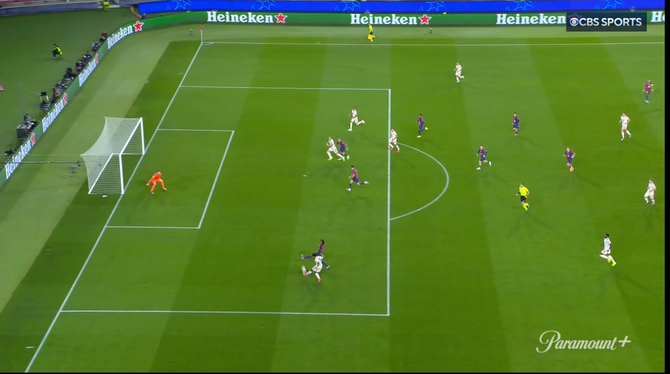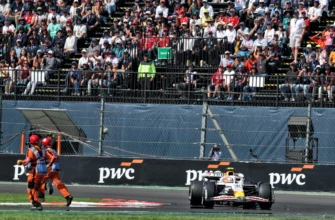In the high-stakes drama of the UEFA Champions League, every goal carries immense weight. But some goals, it turns out, carry echoes of the past, serving as a stark reminder that even in elite football, history has a peculiar way of repeating itself – especially if the lessons remain unlearned. Such was the case with Goncalo Ramos`s decisive winner for Paris Saint-Germain against Barcelona, a goal that wasn`t merely scored, but seemingly replicated from a tactical blueprint laid out almost a year prior by none other than Harry Kane.
The Kane Precedent: A Masterclass in Exploitation
The story begins not with Ramos, but with Harry Kane. Nearly a year before PSG and Barcelona faced off, Kane, then playing for Bayern Munich, scored a goal against Barcelona that, while ultimately not altering the 4-1 match result, left a profound tactical imprint. Barcelona`s high defensive line, a signature of “Hansi Flick`s Barcelona” as described in analysis, was designed to press opponents deep in their own half. However, against a striker of Kane`s intelligence, it became a double-edged sword.
Kane`s genius lay in his positioning. As football pundit Thierry Henry astutely observed, Kane understood Barcelona`s defensive tendency to push forward aggressively. Rather than dropping deep, Kane often deliberately hovered on the edge of the offside trap, pushing the limits. He knew that if the ball switched sides rapidly, he would eventually be behind the play and thus onside, ready to pounce. His goal against Barcelona was a testament to this calculated risk: a perfectly weighted pass bent behind the defensive line, finding Kane in acres of space to deliver a clinical finish. It was a clear, concise lesson in how to dismantle a specific defensive setup.

The Ramos Replication: A Student of the Game
Fast forward to the Champions League clash between PSG and Barcelona. Goncalo Ramos, coming off the bench for PSG, found himself in a remarkably similar situation. And as he later revealed, it was no coincidence. Ramos had studied Kane`s previous goal intently. He understood the blueprint. When Achraf Hakimi delivered an exquisite bending pass, Ramos executed Kane`s move with surgical precision. He hovered, timed his run, and exploited the very same space behind Barcelona`s high line, beating their goalkeeper for the winning goal. It was a carbon copy, a precise replication of a tactical vulnerability that had been exposed before.
This wasn`t just individual brilliance; it was a testament to PSG`s meticulous preparation and Ramos`s astute awareness. In modern football, the margins are razor-thin, and detailed scouting, coupled with a player`s ability to absorb and apply tactical insights, can be the deciding factor. PSG`s coaching staff clearly recognized Barcelona`s enduring defensive characteristic and prepared their players to exploit it, highlighting an attention to detail that sets top teams apart.
Barcelona`s Recurring Nightmare: The Unlearned Lesson
For Barcelona, however, this repeating scenario presents a more troubling narrative. The fact that an opposition player could study a goal scored nearly a year ago and successfully replicate the exact method of exploitation suggests a persistent, perhaps even systemic, defensive flaw. Barcelona`s high defensive line, while effective in pressing and stifling many opponents, carries an inherent risk: it leaves vast spaces behind if the initial press is bypassed or if opponents are quick enough to exploit the gaps.
The offside trap, a core component of this high line, demands flawless execution and constant adaptation. Yet, when faced with intelligent movement and precise passing, it becomes their Achilles` heel. One might imagine that after a premier striker like Kane offered a masterclass in exploiting their defensive setup, Barcelona`s tactical blackboard would be swiftly updated. Alas, some lessons, it seems, require a repeated demonstration.
“I think a lot about beating a high line. For me, personally, it`s my favorite place. I just went there, and we have very fast players coming from behind, and even against Barcelona, they have a video of Harry Kane, I think two years ago, and he did something like I did on the goal, and he scored,” Ramos commented, highlighting his premeditated approach.
The Stakes of Stagnation in Elite Football
In the unforgiving arena of the Champions League, tactical stagnation can be fatal. While “Hansi Flick`s Barcelona” might find their characteristic style effective in domestic competitions or against most teams globally, the very best opponents will relentlessly probe for weaknesses. Barcelona`s inability to adjust this specific defensive aspect, despite previous exposure, raises significant questions about their tactical flexibility at the highest level. A world-class attack can only compensate for so much if fundamental defensive vulnerabilities remain unaddressed.
Goncalo Ramos`s winning goal was more than just a momentary triumph for PSG; it was a poignant tactical statement. It underscored the critical importance of scouting, preparation, and player intelligence in modern football. More critically, it served as a stark, somewhat ironic, reminder to Barcelona that even the most storied clubs must continually evolve and learn from their past, lest they find themselves repeatedly undone by the same unlearned lesson.







